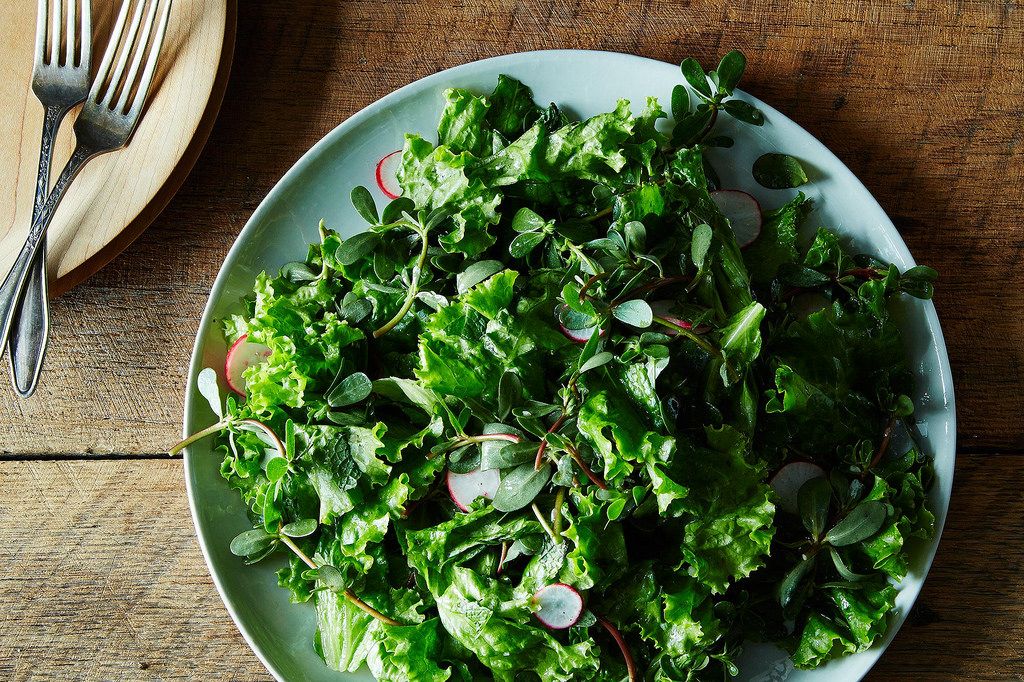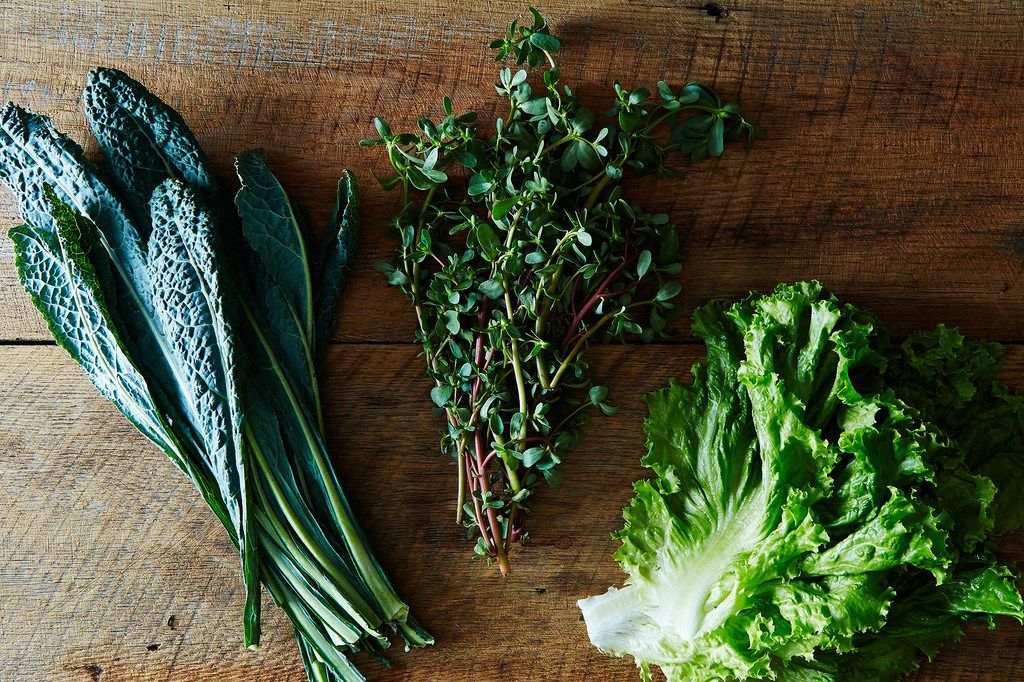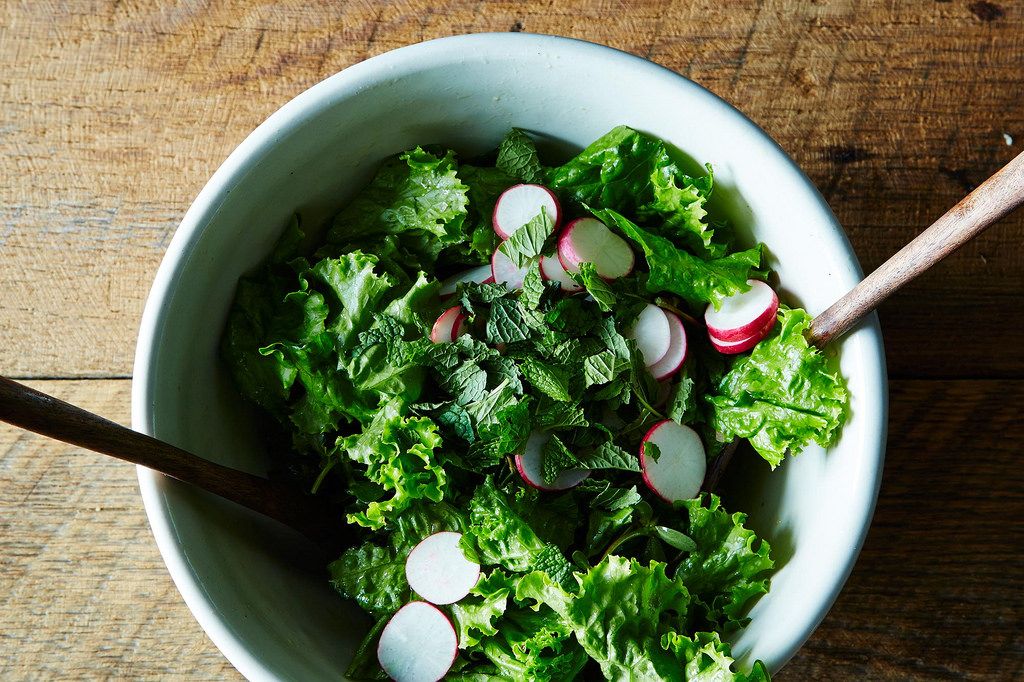Here at Food52, we love recipes -- but do we always use them? Of course not. Because once you realize you don't always need a recipe, you'll make your favorite dishes a lot more often.
Today: Break down the salad-making process into four steps, and you'll never be disappointed by your greens again.

Salads can be intimidating. Not because they're difficult to make -- they can be whipped up quickly and with relatively few ingredients -- but because there are so many choices, and you don't want to go down the wrong path. You have to decide whether you’d be happier with kale or arugula, if you want to throw that leftover chicken in the mix, and what kind of dressing goes best with all of those random add-ins. It’s a lot to consider, and you don't want to end up disappointed by wilty, weighed-down greens (or boring, underseasoned ones either).
So whether you’re looking to find a solid go-to salad, or if you’re a veteran salad-maker who wants to shake things up a bit, check out these four steps for salad-making. Chances are you’ll see a lot more greens in your future.

1. Pick Your Greens
Let’s start with the base of your salad. Though your add-ins will ultimately determine how heavy the salad is, you can start off lighter or heavier depending on your greens. If you’re looking for something lighter, try Bibb lettuce or mixed greens. If you’re looking for something in the medium territory, go for spinach, romaine, or arugula. The heavier options come from the dark leafy greens category, like kale and chard, and also radicchio (though technically not green, radicchio makes a great salad).
The best way to pick your greens, however, is to go with what's in season at the farmers market. It's easy to forget that greens are seasonal, since you can get most common varieties year-round at the grocery store. But by selecting what's in peak season, you can limit your greens options (so it's easier to choose), and you'll end up with a fresher salad.

2. Pick Your Dressing
When making a salad, it's important to get the right ratio of greens to dressing -- an over-dressed salad is soggy and no fun. For delicate greens, your best bet is to go with a more delicate vinaigrette. Sturdier greens will stand up to a thick or creamy dressing -- like a spicy peanut, ranch, or sesame tahini.

3. Pick Your Add-Ins
Like our beloved pasta salad, add-ins allow you to go wild with your green salad. It’s both a great way to get rid of leftovers and random ingredients (hello, last few slivers of steak from dinner the other night!) and beef up your meal. As with the greens, it's best to pick vegetables and fruits that are fresh and seasonal. You can also throw in cheese (like Parmesan or ricotta), croutons, spices and herbs (mint is wonderful in salads), hard-boiled eggs, chickpeas, savory granola, anchovies, olives -- the list could go on forever. Try to pick two or three strong options and add them in to your heart's content.

4. Dress Your Greens
It’s time to bring the previous steps together. In terms of timing, Harold McGee advises, "oil-based dressings like vinaigrettes should be added only at the last minute, because oil readily wets the waxy leaf cuticle, percolates through the empty spaces within, and soon makes the leaf dark and sodden." So if you're working with a vinaigrette, keep it separate from the greens until the last possible moment.
To begin dressing the salad, make sure your greens are dry and grab salad tongs (or your hands) to gently fold your dressing into the greens. Add a little bit of dressing to your greens at a time and work slowly towards a good greens-to-dressing ratio (tasting a leaf or two can help you determine when you have reached this point). Take care not to overdress your salad -- you can always add more dressing, but it’s very difficult to take away. The leaves should be coated and glistening, but not weighed down. This is especially important if you pair a heavier dressing with lighter greens. Alice Waters recommends tossing a large bowl of lettuce with three quarters of the dressing you think you'll need, taste, and add more dressing as needed.
For kale, you can massage the dressing into the leaves to soften them and add more flavor. And sometimes, you might want to keep the dressing and greens unmixed. Wedge salads or other head lettuce salads should have the dressing drizzled over the leaves but not mixed in -- the dressing will get incorporated as you eat.

Tell us: What's your favorite leafy salad combination?
Photos by James Ransom








See what other Food52 readers are saying.